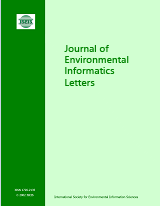doi:10.3808/jeil.202100055
Copyright © 2024 ISEIS. All rights reserved
A Novel Method for Treating Heavy Metal-Contaminated Soil: The Combined Electrokinetics and Permeable Reactive Barrier Technique
Abstract
Heavy metal contamination of soil is a serious environmental problem worldwide, but the remediation methods available for heavy metal-contaminated soil have many shortcomings. A combination of the electrokinetics and permeable reactive barrier (EK-PRB) techniques has been developed in recent decades for remediation of contaminated soils. EK-PRB has the potential to overcome the shortcomings of existing methods and to create new opportunities for the treatment of heavy metal-contaminated soils. EK-PRB com- bines the advantages of each method to control the transfer of heavy metals in contaminated soils and simultaneously remove them in situ. This method has the advantages of wide applicability across soil types, high adaptability, in-situ remediation, avoidance of the gen- eration of wastewater containing heavy metals, and facilitation of resource recovery and utilization. At present, investigations of this technique have generally been conducted at the bench scale. The PRB materials used include zero-valent iron, activated carbon, and in- dustrial waste with reduction or adsorption capacity. The heavy metal pollutants treated include chromium, cadmium, arsenic, and copper. Much work remains to be done for the further development of this technique.
Keywords: soil contamination, heavy metal, electrokinetics, permeable reactive barrier
Supplementary Files:
Refbacks
- There are currently no refbacks.
